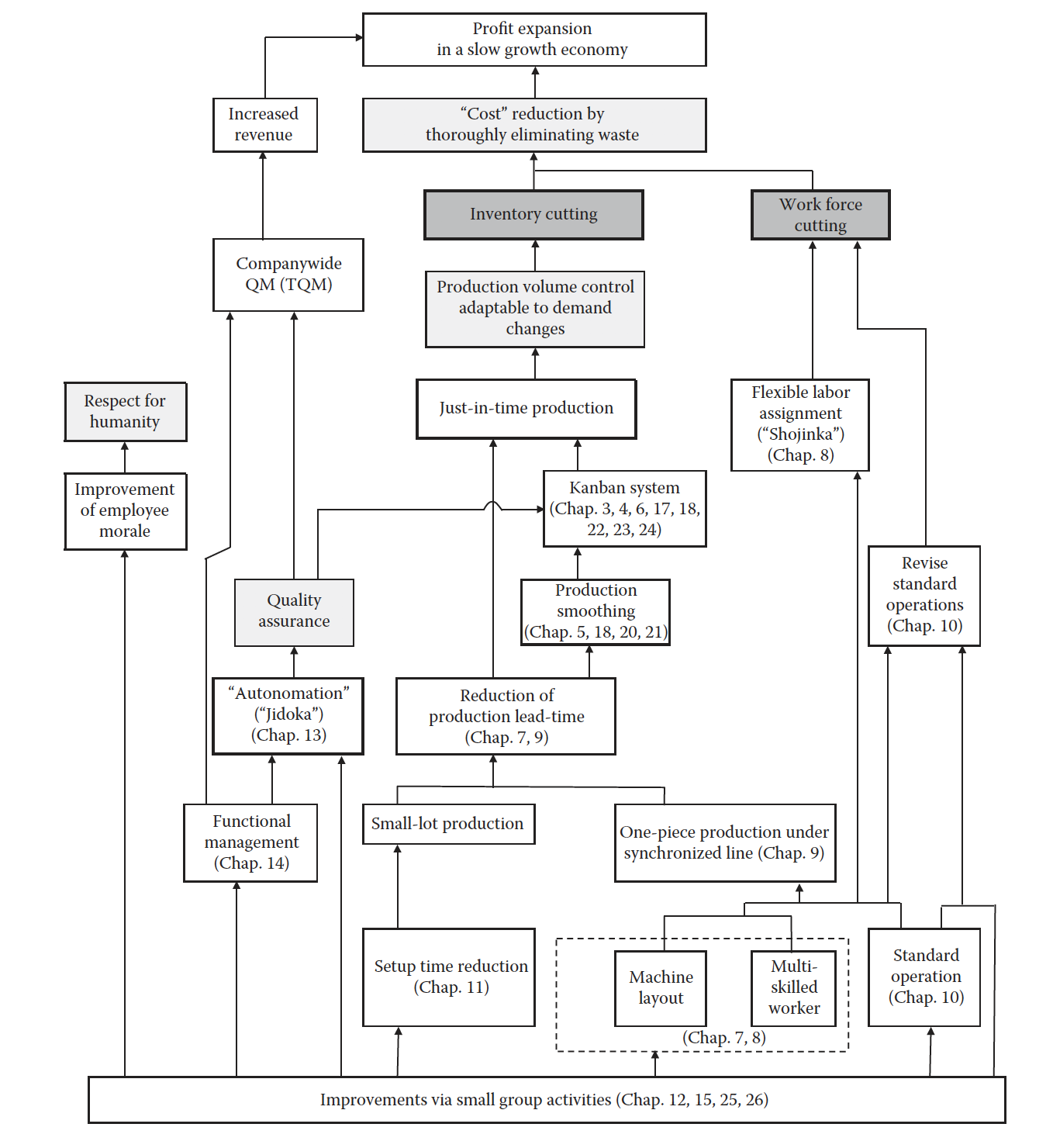Toyota Production System
An Integrated Approach to Just-in-Time
Note: All the pictures used on this page are extracted
from Toyota Production System, An Integrated Approach to
Just-in-Time book. I have written the page numbers in the
braces from where these pictures were taken.
I acknowledged the text used from this book by using
quotes around that text and also mentioned page numbers in
braces.

Book Review:
Are you interested to work in an automobile industry or
setup your own automobile industry like Elon Musk, this is
the right book to read! Be a little cautious if you are
thinking about doing the later as the automobile industry in
USA is very heavily crowded.
After 1973 oil crisis imposed by Organization of Arab
Petroleum Exporting Countries, Toyota Productions systems
implemented and promoted a Toyota Productions Framework.
"The main purpose of the system is to eliminate through
improvement activities various kinds of waste lying
concealed within a company." (page 3)
The author starts of his first chapter by primarily focusing
on various important aspects on which total framework of the
Toyota production systems lies on. He highlights topics such
as primary purpose, kanban systems, production smoothing,
shortening setup time, process layout for shortened lead
times and one-piece production, standardization of
operations, autonomation, improvement activities, the Goal
of TPS. Later in the first section of his book, he talks
about how Toyota achieved its primary goal of profit through
cost reduction by employing good strategies like elimination
of overproduction, limiting excess inventory and
overproduction, reducing unnecessary capital investments.
In the second section of his book, the author talks about
all the subsystems of Toyota production systems which should
function effectively to achieve all the goals prescribed in
the first section of his book. He talks about introduction
of supplier kanban, smoothed production, information system
for supply chain management in depth. Concepts like 5S
concept which is used to manage slack in an automobile
company, shortening of production time, standard operating
procedures and machine layout are very centric to automobile
industries. A person from another industry may not find it
very useful knowing in depth about these concepts but it
would little useful to know the summary of these concepts
as these concepts can be generalized and used everywhere in
the world. One of the best chapters of this book is about
“One-Piece Production”, the author describes it as “the
concept of having things flow smoothly through the factory
one by one, like water, without any holdups” (page 161).
One-Piece Production can also be implemented in software
engineering with little modifications and it would have a
very good positive effect on the quality of software
delivered. I personally feel that One-Piece Production has
few traits of waterfall model of software development.
Section three of this book was quantitively approached. The
author states few terms like Sequencing method, Goal Chasing
method I & II, computing number of kanbans, he gives
formulas to compute those terms quantitively. He gives us
very good examples of his own or detailed study of Toyota
companies for each term used and that makes it very easy to
understand those terms and their usage. Last section of
this book deals with management of human resources. Few
concepts like “Kaizen Mindset” are very well explained by
the author. He later talks about various topics relating to
improvement of workforce and reduction of workforce and
autonomation of several tasks.
This book is a very good book to know about various
subsystems of an automobile industry. The author states
the concepts theoretically and complements it with a
detailed case studies of any of the Toyota companies or
some made-up examples for easy understanding. It is little
difficult to create any analogies between automobile
industry and IT industry for few of the concepts of this
book otherwise it is a good book to read and know about
various processes of an automobile industry.